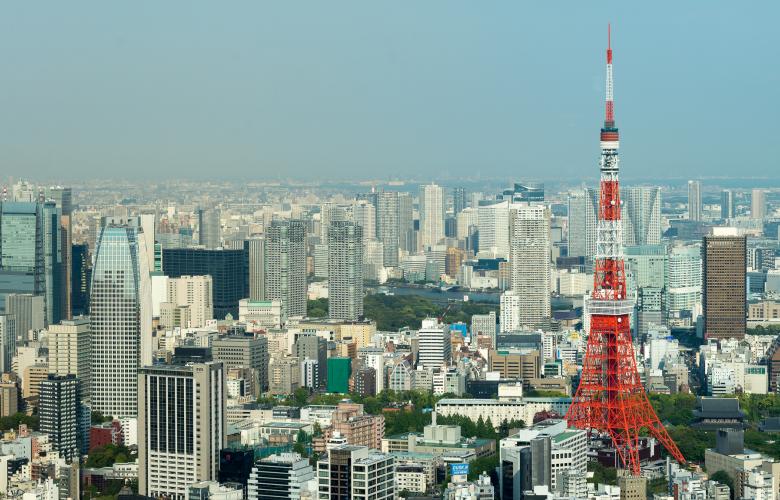Real estate investment and management are defined by each city’s unique demographics, history, law, and economy. In Tokyo, the largest urban sprawl of the globe, the one consistent factor has always been change. Below are 5 key factors to be aware of when deciding on a property in the Japanese capital.
1. Unique demographics
Japan is well known as the globe’s most aged population with the lowest birth rate. The media isn’t short of stories that depict Japanese rural towns dying out or offering free houses to young families with children in a desperate attempt to secure the future of their community. However, things play out differently in the capital.
Part of the desolation of small villages in the mountainous areas of Japan is due to young people flocking to the Greater Tokyo Area, which is home to around 37 million people (almost a third of the Japanese population) as both education and work opportunites abound here.
Investors, therefore, do not need to fear vacancies if they invest alongside these trends. The 23 wards of Tokyo remain popular with renters, but commuter towns far outside the capital less so. Single occupancy households are now the dominant type of living arrangement in the Japanese capital — and investment properties designed for one person constitute not only the safest long-term investment for landlords, but usually also offer the highest ROI (return on investment).
2. Free land ownership
Investing in foreign countries can mean jumping through many hoops or being faced with legal obstacles for non-nationals or non-residents. Besides its often-lamented bureaucracy, Japan makes it surprisingly easy for foreigners to acquire real estate here. Foreigners can buy and own both land and buildings in Japan, as opposed to some other Asian countries (e.g. Thailand) that do not permit non-nationals to own land.
And while many capital cities, for example London, barely have any freehold properties available for sale — meaning that the buyer will own both the property and the land — freehold is the most common form of a real estate in Japan. Leasehold contracts are also available — where the buyer acquires the building but has to pay a lease on the land – but these are much less common and usually sold by temples or shrines that own large areas of land in the Japanese capital.
More information can be found here.
3. Rapid depreciation
Japanese tourists have been known for decades to flock to Europe to admire its old buildings. And there is reason behind the madness: most buildings in Japan are constructed to be torn down after only a few decades. It is estimated that most buildings in Tokyo are fully depreciated after around 25 years.
While it is attractive to live in a Victorian flat in London or a pre-war preserved building in Berlin, old certainly is not charming in Japan. On one hand, this means that a brand new property will almost immediately lose value — unless there is land price appreciation to stir against this. On the other, it means that older buildings in prestigious neighbourhoods can be acquired for substantially cheaper prices.
4. Rent distortion
A side effect of the rapid depreciation is rent distortion in Tokyo, meaning that while the buying price of an older vs. a newer property varies greatly, the difference in rent is significantly smaller. In other words, an old property can be acquired cheaply but still rented out at a rate only somewhat below a new property in the same area.
More information can be found here and here.
Another factor for rent distortion is location. Properties in the so-called five central wards of Tokyo — namely Shibuya, Shinjuku, Chiyoda, Minato and Chuo — are the most expensive due to high land prices. Properties located in the other of the total 23 wards are substantially cheaper to acquire, but again, can be rented out for rates that are lower, but still higher in proportion to the acquisition price, leading to a higher ROI.
More information can be found here.
5. A bubble history
Japan remains haunted by its bubble era image: a time when Tokyo was the most expensive city on the planet and the yen the most valuable currency. In the 1980s, the Imperial Palace of Japan was estimated to be worth as much as the State of California and the combined properties of Tokyo were believed to be worth more than all real estate in the USA. Those days are long gone and abruptly ended in the early 1990s, followed by a period known as "The Lost Decade".
Since then, Japan has experienced another mini real estate bubble from 2005 to 2009. And since 2013, land prices in the Japanese capital have been on the rise again, but recently leveled off. Real estate investment can either focus on ROI, which in Tokyo is generally higher than in other world capitals, or on land price increase, which has shown to be volatile in Japan over the past decades.
More information on the history of Japanese real estate booms and busts can be found here.
By Mareike Dornhege
Similar to this:
Shibuya's gentrification explained
History and the rise of Japan properties
Top Tokyo redevelopment project





